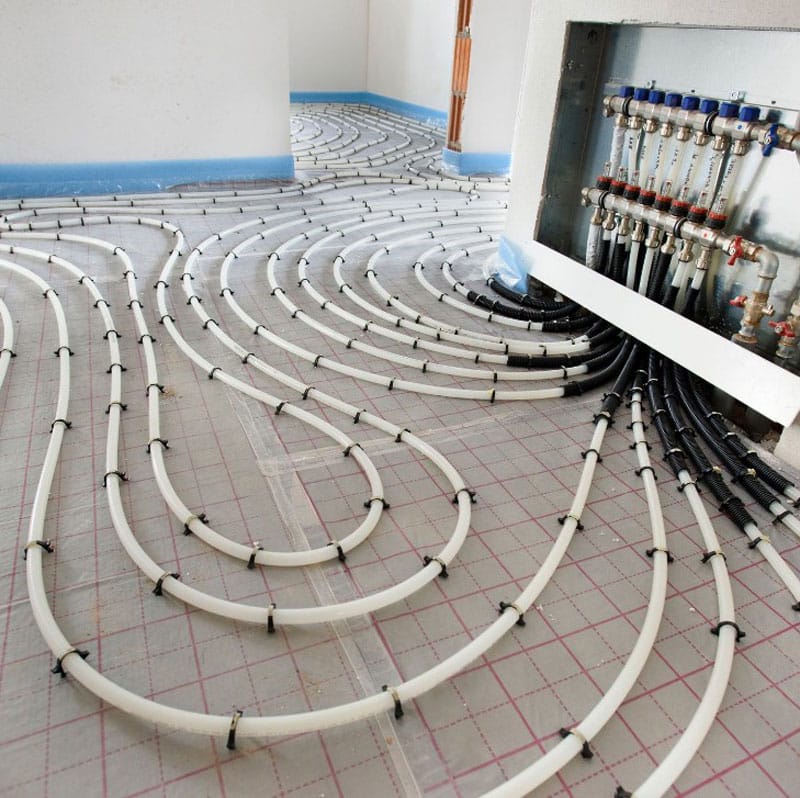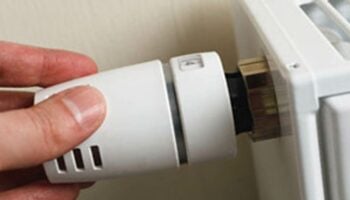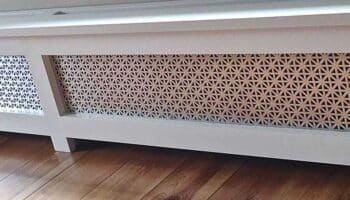We've independently reviewed this article to make sure it's as accurate as we can make it.
To find out more about our article creation and review process, check out our editorial guidelines.
If you’ve gone through a major renovation or have a new build with upgraded underfloor heating, congratulations. You made a great choice. But what do you do if your new floor heating is not working?
There’s endless info online about troubleshooting traditional HVAC issues but little in comparison when it comes to underfloor heating.
We’ve put together a comprehensive guide of problems you might encounter and the fixes to go with them, so keep reading!
Reasons Why Your Underfloor Heating Isn’t Working
Before you can troubleshoot your system, you need to be aware of what kind of underfloor heating you have. Depending on the type, you will encounter a different set of potential problems.
Next, try some simple troubleshooting steps. Your problem is often something simple, so try these before delving into the deeper issues mentioned below.
| Simple Troubleshooting Steps to Start With | |
| Check the Valves | Assuming your system is hydronic, check the temperature setting of your heat valves and adjust if necessary |
| Check Your Thermostat Sensors | Make sure your sensors are accurate. If your thermostat is getting incorrect readings of your room temperature, your heating system will get incorrect messages |

Now, depending on the type of underfloor heating you have, consider the following possible issues.
Electric Radiant Floor Heating Not Working
#0 Check Your Breaker!
Before we get started on the main fixes, I just want to put a quick note to check your circuit breaker.
Your heating may have tripped the circuit – which could be the culprit. Make sure all of your breakers are fully closed, just to make sure that wasn’t the issue.
#1 Faulty Thermostat
The thermostat is the hub of any type of HVAC system. It communicates with both your heating and cooling, telling each when to turn on or off depending on your settings and room temperature.
If your thermostat is broken or faulty, the result could be floor heating that doesn’t turn on at all or turn on and then run for longer than it should. The first can cause discomfort, the second will cause increased utility bills.
Solution. Most electric floor heating systems run on line voltage thermostats. This type of thermostat operates at 110 or 240 volts and has two or four wires, so check to ensure they are connected properly.
While thermostats do not have a specified lifecycle, if your line voltage type is more than 10 years old it might be time to replace it.
#2 Damaged Cables
Even though your electric heating cables are buried under your floor, they are delicate and can be damaged—and damaged cables are a fire hazard.
Solution. Find the damaged cable or wire—more on that below—and repair the broken section. You will need to pull up the floor, so if you feel the job is more than you can handle, hire a professional.
Every system will be unique, but you can follow the video below to see how to repair the damage.
#3 Defective Heating Mat
If the previous two solutions haven’t helped you to find and fix the issue with your heating, you may have a defective heating mat. Unfortunately, if this is the problem it’s an expensive six.
Heating mats are designed to have a long lifecycle but like with anything else, things can break down before their time. This is one reason to make sure you buy quality mats instead of just looking for the cheapest. The cheapest will cost you more in the long run.
Solution. Many mats come with a lifetime guarantee, so look into that before proceeding with anything else. If it is determined that the fault belongs to the manufacturer then the cost to repair or replace the mat should be covered under your guarantee.
To repair the mat yourself you need to contact the manufacturer for the process.
How to Find Broken Wires or Cables
Finding a broken wire or cable underneath your flooring does not have to be like finding a needle in a haystack.
Underfloor heating experts typically have troubleshooting toolkits that you can rent. Most toolkits come with several items, including:
- Dielectric strength tester
- Multimeter
- Splice kits
- Thermal imaging camera
- Time delay reflectometer
- Variable ac transformer
The camera will help you find the broken wire through your flooring, and the other items will help you diagnose and fix the problem once you’ve found it.
Hydronic Radiant Floor Heating Not Working
#1 Malfunctioning Zone Valves
Your zone valves allow the water from your boiler to move through your heating system. If they’re faulty, whether because of wear and tear or another reason, waterflow may stop entirely or be inconsistent. In either case, this will impact the amount of radiant heat produced.
Solution. Check to make sure that the transformer to your valves is working properly. If any fuses have blown replace them. Otherwise, you may need to call a professional.

#2 Damaged or Corroded Pipes
The piping in your underfloor heat system should last a lifetime but can corrode over time. And flooring has been replaced at any time through the life of your heating system, pipes may have been damaged.
If you’re seeing water damage on your floor or around baseboards envelope trim, suspect that you have a piping problem.
Solution. Unfortunately, if this is your problem it’s an expensive fix. It’s not something that most homeowners can handle, so professionals are needed to rip up and replace the flooring, remove and replace piping, and so on.
#3 Air Locks
Chances are your heating system is a closed-loop system but in some cases, it may be an open loop, although they’re not generally recommended. An open-loop system mixes your heating water and your drinking water using the same system.
Open loops, or any interruption in the flow of water from your source, will impact your underfloor heating—just like it will impact water’s ability to come out of the faucet.
Airlocks are oxygen bubbles that build up and block your piping, preventing the flow of water. If this happens it can overheat your system.
Solution. Typically, the manufacturer of your hydronic system will include instructions in your manual on how to deal with this. For the most part, it’s the same flushing process that’s used when your system was installed.
#4 Check The Zone Pump / System Pump
If your system seems to be trying to operate normally, but you’re just not getting the right amount of heat, it could be an issue with your pump.
If you believe this might be the case, it’s often best to call a professional.
As a last note, it’s also worth checking your thermostat just like with electric systems above.
Conclusion
Depending on the type of system you have—hydronic or electric— there will be different issues you face.
To recap:
| Hydronic System: Check For . . . | Malfunctioning zone valves |
| Damaged or corroded pipes | |
| Airlocks | |
| Electric System: Check For . . . | Faulty thermostat |
| Damaged cables | |
| Defective heating mat |
Hopefully, this information has helped you diagnose and fix your problem.
While you’re here, why not check out our related posts below. Perhaps we can help you with something else.
Thanks for reading







